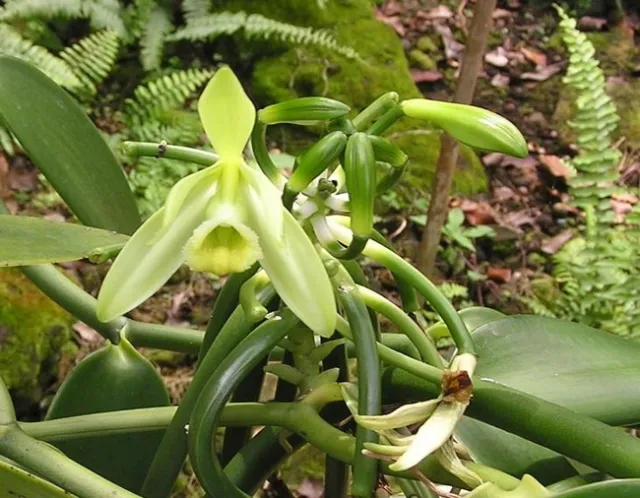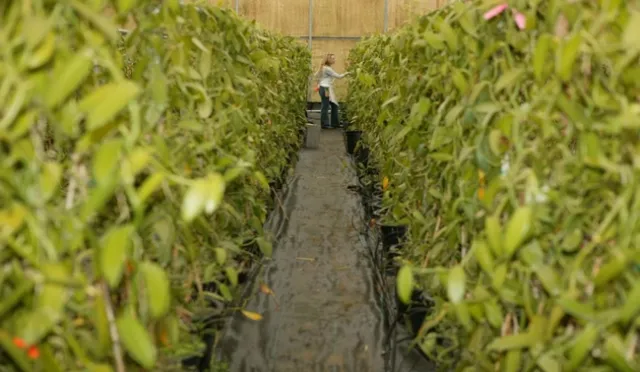When Marco Polo set out to find the truth behind the stories of herbs and spices of our wildest dreams, little did he realize how impactful his journey would be to the culinary practices of the world as he knew it. More importantly, his discoveries would focus the attention of others to find a trade route which would allow greater access to these biological riches. Amazingly, there was at least one herb/spice that would not immediately become apparent to the rest of the world until the Spanish discovered it in Central America and brought it back to Europe.

Vanilla
The Mayans are credited with being the first to intentionally grow an epiphytic, vine-like, orchidaceous plant that produced edible fruit pods. The vanilla plant is native to Central America and the Mayans used the fruit to soften the bitter taste of their chocolate beverages. The Aztecs also found it pleasing and used it to flavor xocoatl, their chocolate beverage, which was discovered and sent back to Spain by conquistador Hernando Cortes. Soon it became a popular spice in Europe.
Of course, you don't just reach up and pull the pods of a vanilla plant and eat them! No, the pod (bean) has no aroma until it has been cured. Curing and drying takes about 4 to 5 months and starts with subjecting them to nightly sweating and daily exposure to the sun for roughly 10 days. Once they're dry enough, they are graded and packed with the highest grade of bean exhibiting tiny crystals of vanillin on the outside of the pod.
Thomas Jefferson is attributed with bringing vanilla to the U.S. after serving as ambassador to France. His favorite ice cream flavor – vanilla!
Vanilla flowers range in color from white to cream to pale green. The plant is challenging to grow, but even more challenging to produce fruit in non-native surroundings as the flower is dainty and can only be pollinated by certain tiny bees. Commercially, these plants are hand pollinated, the process of which is credited to Edmund Albius, a 12-year-old slave from Reunion Island. He was actually sent to train many other growers in the art of vanilla pollination.
Labor cost being what it is, at one point in time this spice was second in cost only to saffron. We enjoy better pricing now as the process has become more refined and synthetic production of “vanillin” has proven to make imitation vanilla more accessible to our markets. However, imitation vanilla only replicates 1 of the 250 naturally occurring flavor compounds in true vanilla, but this one retains its flavor at higher temperatures than the natural vanilla.
The extract is made by steeping cured beans in a 35% alcohol/water solution. Beware that some commercially available vanilla extracts may contain sugar, dextrose, corn syrup (high fructose), propylene glycol, or glycerin.

“Vainilla” is the Mexican name for vanilla and is some of the best extract at the most reasonable price in the world. It is produced in the Vera Cruz region of Mexico and has a smooth, rich, creamy, and spicy flavor. Bourbon vanilla is named for the island near Madagascar on which it is produced. It has a rich, creamy flavor and has the thinnest sized beans. Tahitian vanilla is a different species of vanilla plant which has a more floral, fruity flavor. It is darkest in color and very fragrant, but not as flavorful as the other two. You may run into this spice also produced in and marketed as Hawaiian vanilla (pictured above). By the way, French vanilla is only a flavor of ice cream. It is differentiated from vanilla ice cream (Philadelphian) by incorporation of egg custard into the blend, adding a richer creaminess to the ice cream.
Antioxidant, anticarcinogenic, antidepressant, fever-suppressant, and sedative are properties vanilla has been attributed over time. It was recorded to have been used by the Aztecs to control hysteria and depression (probably in sacrificial situations). During the 18th and 19th centuries, vanilla extract was drank to “exhilarate the brain” and increase muscular energy. (Maybe it was just the 35% alcohol?)
For more information, visit

